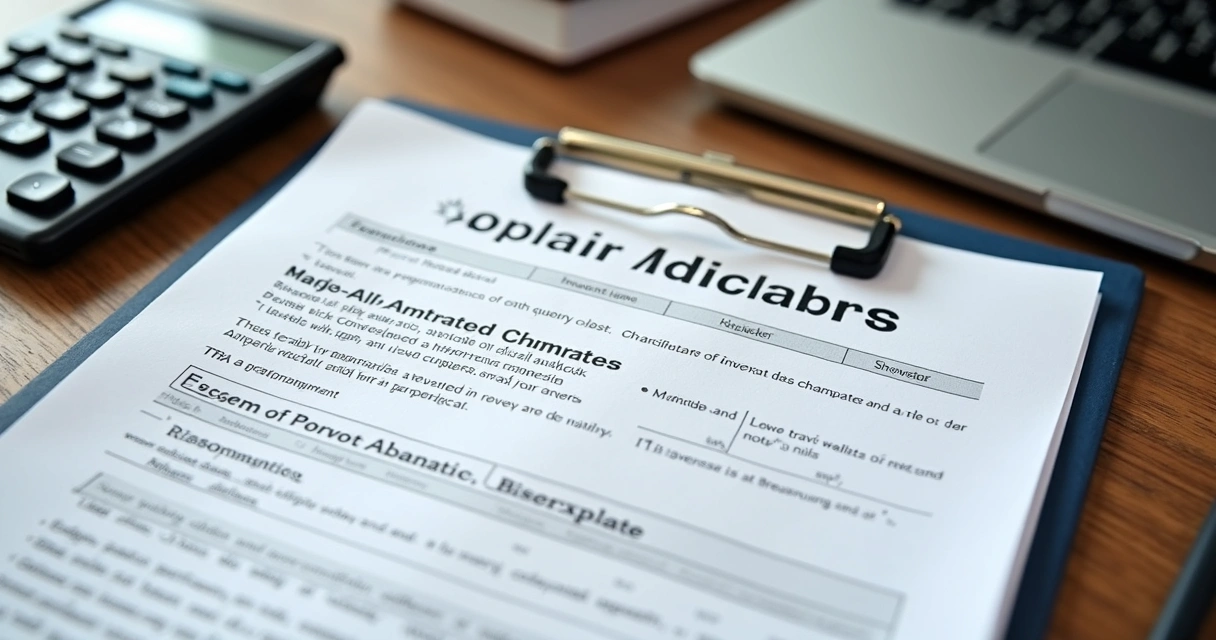When it comes to the American dream, there’s one image I always have in mind – a house, a yard, maybe a porch swing. But for many, the way to reach that dream home isn’t with a suitcase full of cash. The true route? Understanding how home financing operates in the United States. Over years of experience and after helping countless Brazilians and international clients, I realized that the concept can seem overwhelming at first. Today, I’ll try to map it out as simply and honestly as possible.
What is a mortgage and how does it work in the U.S.?
A mortgage is a long-term loan secured by real estate, commonly used to buy a house, an apartment, or investment property in America. The lender (usually a bank or a specialized company) gives you the money, and you agree to pay it back over several years, plus interest. If the borrower can’t pay, the property itself is the collateral.
Many clients start out curious, unsure if financing in the U.S. is accessible only to citizens or residents. The truth is, American mortgages are designed for a broad audience. With options chosen carefully, even non-residents and foreign investors can benefit from financing.
The basics: Terms, rates, and structure
- Term: Mortgages in the U.S. commonly have 15 or 30-year repayment periods. The length influences monthly payments and the total amount paid in interest.
- Interest Rate: This is the ‘cost’ to borrow. Sometimes it’s fixed (remains the same for the loan’s life), and sometimes variable (can change over time).
- Down Payment: U.S. lenders usually require a cash payment upfront – often, but not always, 20% of the property’s value.
In essence: you buy now and pay gradually, with your property as security.
According to data from the Federal Housing Finance Agency's National Mortgage Database, the vast majority of home purchases in the U.S. are financed, not bought outright. This structure supports a real estate market where access is not limited to the wealthy or the well-connected.
The steps: Applying for a mortgage, from desire to keys in hand
I remember the nerves I see in first-time buyers. It’s that moment when paperwork and numbers seem almost too much. But, as I guide clients through these steps, the process becomes less intimidating:
- Preliminary assessment:
- Review your credit and finances. Lenders want stable income, manageable debts, and some savings.
- Check your options for down payment and understand your limits. Tools like the Heart Mortgage mortgage calculator can help you estimate your possible payment and affordability.
- Pre-approval:
- This early commitment from a lender can speed up the buying process. It’s not required, but strongly recommended, especially in competitive markets. I usually send clients to guides like the mortgage preapproval guide for buyers to understand the advantages more clearly.
- Finding your property:
- Now, you shop. Location, schools, and return potential weigh heavily here. The exact home, investment, or vacation house will depend on personal and financial priorities.
- Application and documentation:
- The official mortgage application collects information about income, assets, debts, residence history, documents proving identity, and sometimes, a U.S. or ITIN (Individual Taxpayer Identification Number).
- You may read more details about the process at steps to apply for a mortgage in the U.S..
- Processing, appraisal, and approval:
- The lender checks your documents and arranges an appraisal, to confirm the property's value and condition. If everything aligns, you receive a commitment letter, often in just days thanks to digital processes.
- Closing and move-in:
- Final paperwork is signed, funds transfer, and the property title is officially yours. A month later, the first payment is due.
Why U.S. mortgages attract foreign buyers and investors
From my daily work, I know Brazilian and international buyers have their eyes on the U.S. not just for lifestyle, but due to things like:
- Low entry barrier: Compared to many countries, America offers relatively straightforward documentation and options for non-residents. Even without a social security number, you can apply using an ITIN.
- Potential for attractive returns: Real estate in strategic states can bring both rental income and long-term appreciation. With the right mortgage, even modest down payments can lead to large investments. The Consumer Financial Protection Bureau regularly reports on mortgage origination trends, offering useful context for investors considering timing and market entry.
- Refinancing flexibility: Over time, you can replace your original loan with a new one at a lower rate, or to cash out some property value. This adaptability is another reason so many invest, move, and grow in the U.S.

Mortgage programs: A wide variety for every type of buyer
The U.S. mortgage market is diverse. As reported in the Federal Reserve Bulletin, there’s been a significant shift from conventional to government-backed loans due to changing economic conditions. Depending on your needs, you can find a suitable option:
- Conventional loans: Mostly for those with strong credit and regular income. You can understand more about these at the Heart Mortgage Conventional Program.
- FHA/VA/USDA loans: Government-backed for first-time buyers, veterans, and properties in rural areas. Lower down payments but special requirements exist.
- ITIN mortgages: Great for foreigners without a Social Security Number. What matters most here is showing steady income and a reliable banking relationship. The proof of funds doesn’t always need to be U.S.-based.
There isn’t one perfect loan – only the loan that fits your plan and reality.
What documents and proof of income are needed?
Sometimes, I meet buyers surprised by how “official” everything is in the U.S. system. But, these checks are what make American real estate safe for both sides. Typically, you’ll be asked for:
- Passports or government IDs
- Proof of income: recent pay stubs, tax returns (Brazilian or U.S.), or bank statements
- Proof of assets: documentation of the origin of your down payment funds
- ITIN or Social Security Number (when applicable)
- Credit history in the U.S. or proof of “foreign creditworthiness”
If you need a more detailed explanation, I often send clients to checklists before they apply, to avoid last-minute surprises. Having clear and translated documentation speeds the approval process tremendously.
The value of the property as collateral
This is a point I always emphasize: the property itself stands as security for the mortgage. If you don’t pay, the lender has legal claim to the home. That’s why all documentation and property valuations are so detailed – it protects both buyers and the lending institution.
The benefit? Because there’s this security, lenders typically accept lower interest rates than unsecured loans, making the whole structure viable and attractive, especially for long-term investors.
Interest rates in the American system
Rates change based on markets, loan type, and individual circumstances. Fixed rates remain constant for your loan’s duration; adjustable (sometimes called ARM) can shift over time, creating risks and benefits depending on market movements. Average rates for residential mortgages are reported regularly, with the Federal Reserve's Financial Accounts Guide providing granular figures. For up-to-the-minute estimates, I always recommend using a mortgage calculator before any home search.

Foreign investors, ITIN loans, and special cases
If you don’t live in the U.S., don’t worry – there’s a market tailored for you. In my experience, the ITIN mortgage is the gateway for many foreign investors. What’s required?
- Valid ITIN number or similar personal identification
- Proof of stable income, even from overseas employment
- Minimum down payment (usually higher than resident buyers, often starting from 20% to 30%)
- Bank references (can be international in many cases)
- Willingness to provide detailed documentation (translated, when needed)
Digital application systems make this quicker – with some lenders, you can get pre-approval in just a few days. Fast digital verification and secure uploads are now the standard, not the exception. I remember the paperwork from years ago and smile at how much easier things have become.
Strategic factors: Location and return on investment
I tell every buyer and investor: where you buy matters just as much as what you buy. U.S. real estate offers rental possibilities, vacation value, and appreciation depending on region and economic cycles.
- Proximity to schools, universities, and jobs boosts rental value and appreciation.
- Touristic and urban centers tend to keep demand steady. Certain states offer special tax incentives for non-residents or investors.
As the Federal Reserve's 2013 HMDA Data shows, borrowers’ income and regional profiles shape the landscape, and smart choices lead to better long-term results.

Special tips for Brazilians and non-residents
Having worked with many clients from Brazil, I’ve found that small details make a big difference. Here are a few things I always remind non-residents:
- Prepare documentation early, in both Portuguese and English. Certified translations reduce complications.
- Check currency exchange strategies in advance—you will need to show the path of your money from Brazil to the U.S.
- Consider the property’s future usage (residence, vacation, rental) to select the right financing option.
- Don’t overlook the digital nature of the U.S. process: document uploads and e-signatures are widely accepted.
Even if you are outside the U.S., partners like Heart Mortgage make it possible to manage everything from wherever you are. If you’re looking to become a first-time buyer or just want assurance at each stage, the first-time home buyer program is a good place to start getting familiarized.
Conclusion: The path to home ownership in the U.S.
In the end, understanding the ins and outs of American mortgage financing makes your next move less stressful, and frankly, more exciting. Each person’s journey is unique. Some want a place to call home; others look for return on investment, or a secure way to diversify assets across borders. Either way, the U.S. system offers structured opportunities, transparency, and flexibility – even for those starting from another country.
If you want guidance by experienced hands, honest answers, and up-to-date information for every stage of the process, I recommend getting to know Heart Mortgage better. Your dream of property in the U.S. can begin today – with a tailored plan, clear guidance, and support from real specialists. Reach out, and let’s make your goals a reality, one step at a time.
Frequently asked questions
What is a mortgage in the United States?
A mortgage in the U.S. is a loan backed by a house, condo, or other real estate. Buyers borrow money to purchase property and pay it back monthly, plus interest. If they stop paying, the lender can take ownership of the property through a legal process called foreclosure.
How do I apply for a U.S. mortgage?
You start by gathering financial documents and getting pre-approved with a lender or broker. You’ll fill in forms with your personal info, income details, debt lists, and documentation. Thanks to digital processes in the U.S., most documents can now be uploaded directly online, making it quick and efficient from first contact to approval.
What documents are needed for a mortgage?
You’ll typically need a government-issued ID or passport, proof of income (like pay stubs or bank statements), tax returns, documents proving where your down payment funds come from, and a proof of credit history (either U.S. credit or information from your home country).
Is it worth getting a mortgage in the U.S.?
For many, yes. Mortgages create access to real estate that might be out of reach otherwise. With low interest rates compared to unsecured loans, and the ability to buy, rent, or invest in valuable locations, the benefits can outweigh the costs if you plan carefully.
How much does a typical mortgage cost?
Costs vary widely based on the property price, down payment, loan type, and your interest rate. Most loans require monthly payments of principal and interest, plus taxes and insurance. You can estimate these payments with any reputable mortgage calculator to get a realistic picture of potential costs.





